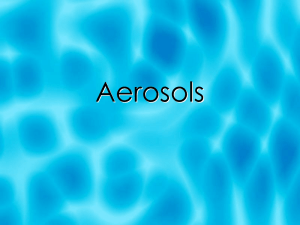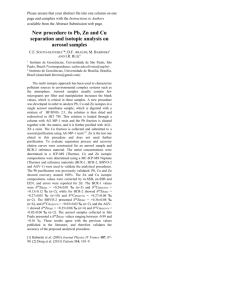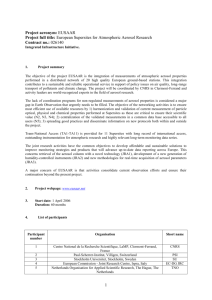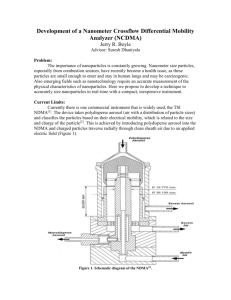characterization of aerosol size using fractal theory in experimental
advertisement
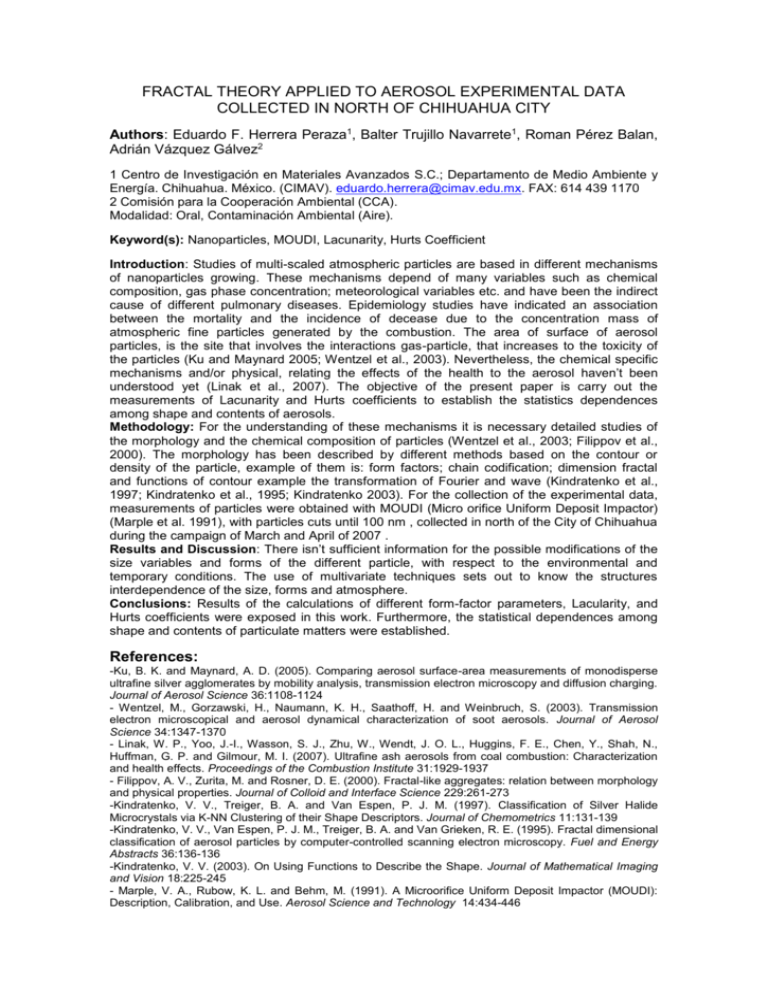
FRACTAL THEORY APPLIED TO AEROSOL EXPERIMENTAL DATA COLLECTED IN NORTH OF CHIHUAHUA CITY Authors: Eduardo F. Herrera Peraza1, Balter Trujillo Navarrete1, Roman Pérez Balan, Adrián Vázquez Gálvez2 1 Centro de Investigación en Materiales Avanzados S.C.; Departamento de Medio Ambiente y Energía. Chihuahua. México. (CIMAV). eduardo.herrera@cimav.edu.mx. FAX: 614 439 1170 2 Comisión para la Cooperación Ambiental (CCA). Modalidad: Oral, Contaminación Ambiental (Aire). Keyword(s): Nanoparticles, MOUDI, Lacunarity, Hurts Coefficient Introduction: Studies of multi-scaled atmospheric particles are based in different mechanisms of nanoparticles growing. These mechanisms depend of many variables such as chemical composition, gas phase concentration; meteorological variables etc. and have been the indirect cause of different pulmonary diseases. Epidemiology studies have indicated an association between the mortality and the incidence of decease due to the concentration mass of atmospheric fine particles generated by the combustion. The area of surface of aerosol particles, is the site that involves the interactions gas-particle, that increases to the toxicity of the particles (Ku and Maynard 2005; Wentzel et al., 2003). Nevertheless, the chemical specific mechanisms and/or physical, relating the effects of the health to the aerosol haven’t been understood yet (Linak et al., 2007). The objective of the present paper is carry out the measurements of Lacunarity and Hurts coefficients to establish the statistics dependences among shape and contents of aerosols. Methodology: For the understanding of these mechanisms it is necessary detailed studies of the morphology and the chemical composition of particles (Wentzel et al., 2003; Filippov et al., 2000). The morphology has been described by different methods based on the contour or density of the particle, example of them is: form factors; chain codification; dimension fractal and functions of contour example the transformation of Fourier and wave (Kindratenko et al., 1997; Kindratenko et al., 1995; Kindratenko 2003). For the collection of the experimental data, measurements of particles were obtained with MOUDI (Micro orifice Uniform Deposit Impactor) (Marple et al. 1991), with particles cuts until 100 nm , collected in north of the City of Chihuahua during the campaign of March and April of 2007 . Results and Discussion: There isn’t sufficient information for the possible modifications of the size variables and forms of the different particle, with respect to the environmental and temporary conditions. The use of multivariate techniques sets out to know the structures interdependence of the size, forms and atmosphere. Conclusions: Results of the calculations of different form-factor parameters, Lacularity, and Hurts coefficients were exposed in this work. Furthermore, the statistical dependences among shape and contents of particulate matters were established. References: -Ku, B. K. and Maynard, A. D. (2005). Comparing aerosol surface-area measurements of monodisperse ultrafine silver agglomerates by mobility analysis, transmission electron microscopy and diffusion charging. Journal of Aerosol Science 36:1108-1124 - Wentzel, M., Gorzawski, H., Naumann, K. H., Saathoff, H. and Weinbruch, S. (2003). Transmission electron microscopical and aerosol dynamical characterization of soot aerosols. Journal of Aerosol Science 34:1347-1370 - Linak, W. P., Yoo, J.-I., Wasson, S. J., Zhu, W., Wendt, J. O. L., Huggins, F. E., Chen, Y., Shah, N., Huffman, G. P. and Gilmour, M. I. (2007). Ultrafine ash aerosols from coal combustion: Characterization and health effects. Proceedings of the Combustion Institute 31:1929-1937 - Filippov, A. V., Zurita, M. and Rosner, D. E. (2000). Fractal-like aggregates: relation between morphology and physical properties. Journal of Colloid and Interface Science 229:261-273 -Kindratenko, V. V., Treiger, B. A. and Van Espen, P. J. M. (1997). Classification of Silver Halide Microcrystals via K-NN Clustering of their Shape Descriptors. Journal of Chemometrics 11:131-139 -Kindratenko, V. V., Van Espen, P. J. M., Treiger, B. A. and Van Grieken, R. E. (1995). Fractal dimensional classification of aerosol particles by computer-controlled scanning electron microscopy. Fuel and Energy Abstracts 36:136-136 -Kindratenko, V. V. (2003). On Using Functions to Describe the Shape. Journal of Mathematical Imaging and Vision 18:225-245 - Marple, V. A., Rubow, K. L. and Behm, M. (1991). A Microorifice Uniform Deposit Impactor (MOUDI): Description, Calibration, and Use. Aerosol Science and Technology 14:434-446
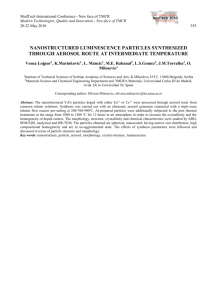
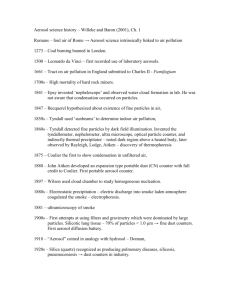


![Jerry R. Boyle[1] - Clarkson University](http://s3.studylib.net/store/data/007321419_1-b664abce006eeced0a7fba0a52eaf95e-300x300.png)

